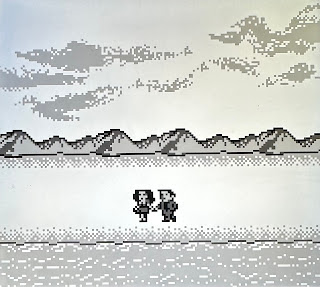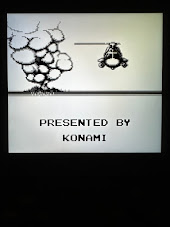I've loved the Paper Mario series since I played the second installment back on the Gamecube in the early 2000s, but have been sporadic in my revisiting the franchise. I played Super Paper Mario on the Wii when it came out, but then did not revisit the series until a few years ago, when I beat the first Paper Mario, originally released for the Nintendo 64 back in 2000.
So now I'm continuing the series chronologically, which meant Paper Mario: Sticker Star for the Nintendo 3DS was next. This story also ties to my history with Nintendo handhelds in a funny way, too. I was all aboard the portable train when the Game Boy came along, followed by the Sega Game Gear, the Atari Lynx, and even the Turbografx 16's TurboExpress, a portable in the early 1990s that - just like Nintendo's Switch - plays the same games as the home console.
But the XBox 360 and PS3 era was such that my interest in portables waned in the early 2010s, and I ignored the arrival of the 3DS. Luckily, my wife kept the flames going and asked for one for a present at some point, and she built up a small library for the device. So I've had my eye on Paper Mario Sticker Star for a decade, which aligns with my newfound desire to revisit the 3DS thanks to my recent playthrough of Phoenix Wright Dual Destinies.
It’s a gorgeous game on the 3DS, of course, as Paper Mario exists in its own 2-1/2D perspective. The 3D depth effect totally works with Paper Mario and the 3DS smoothly handles this style, rotating the perspective and zooming in and out at times.
Mario once again explores a bunch of environments looking for five royal stickers and battles various enemies and bosses. The action is turn based, meaning Mario takes a turn, by using stickers to attack, defend, or heal, followed by the enemy turns.
One of those attack stickers is the Slaphammer, which I only note because an enemy hit with it and killed will go flying around the screen, sideways and backwards, before finally splatting in the foreground, like they hit the screen from the inside. It’s hilarious.
What’s not funny at all is the complete lack of usefulness of Mario’s companion, an annoying talking crown sticker. This little shit redeems itself at the end of the game, but offers only vague hints about environments, puzzles, or other stickers during the game.
I was stuck for over two weeks at the halfway point of the game, where I could not access the second half of the map until a certain item was found. I spent weeks scouring previous areas over and over, only to give up and look it up online, which I hate to do. Turns out the item I needed, a lightbulb, was right there in plain sight in a temple full of torches, sitting in a wall sconce just like the regular torches, blending in somehow in my aged brain every time I had previously passed it.
All my companion said about where I was stuck was the obvious thing, that it was dark. Also useless was the lack of any printed manual with the game, but that’s just a sign of the times.
Once I got past that I finished the second half of the game without further difficulty. The overall obtuseness permeates the game design, especially in regards to “things”, everyday items like scissors and vacuum cleaners, that Mario converts to stickers.
There are dozens of different “things” that make stickers with various uses, but only through experimentation can one know what they do. In one boss fight, the background was a baseball stadium, so naturally I used the baseball bat thing-sticker. It did a good amount of damage but no more than any other thing-stickers.
Nonetheless, the useless companion mentioned earlier chided me AFTER MY VICTORY against the boss. If the baseball bat wasn’t the sticker I was supposed to use in the baseball stadium, then what was? I’ll never know, or really care to know.
Don’t get me wrong, Paper Mario Sticker Star was still the lite-RPG I needed, and a great showcase for the 3DS. It was just sort of a slog at times. It’ll be a few years before I attempt the next Paper Mario game, though. Kind of like Assassin’s Creed.






